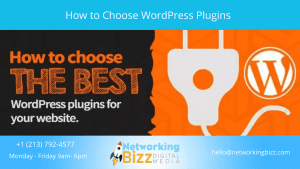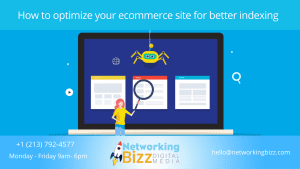If you’re a beginner at web design, the number of popular web design tools and software can be a bit daunting.
If you just need a quick and easy website, you might just feel like hiring a web designer and letting them handle it.
However, it’s essential to know the basic pros and cons of the most popular web design platforms so you don’t end up making the wrong choice and racking up development costs when you start over.
It’s important to know what you want to get out of a web design platform and how much you’re willing to pay for one.
Web design platforms can be subscription-based or non-subscription-based.
Furthermore, different platforms have different features aimed at specific parts of the market.
For example:
- Platforms such as Magento and Shopify are geared towards ecommerce websites.
- Joomla and Drupal are highly customizable and might be preferred by advanced developers with programming knowledge in HTML and PHP.
Here is a comparison of the top web design platforms based on your specific wants and needs as a site owner or web designer.
Non-Subscription-Based Platforms:
Non-subscription-based platforms let you run your website on your own server since you won’t actually be leasing the platform.
Be aware that just because these platforms are “non-subscription-based” doesn’t mean that you won’t have to pay any fees.
You might have to budget for additional costs such as plugins, themes, and additional features.
Dreamweaver:
Early on, Adobe Dreamweaver was one of the most popular platforms.
In the early days of the web, websites needed to be coded by hand in HTML, and Dreamweaver and a few other software like it, came out with a visual interface to design pages and change the code to HTML.
Dreamweaver is not as popular today, but it still comes with some beneficial features such as being highly customizable and allowing you to convert graphic designs into HTML code.
WordPress:
For the past decade, the most prominent non-subscription-based platform worldwide has been WordPress.
Though WordPress was originally designed for online blogging and still provides excellent support for blog websites, it has become a highly versatile free, open-source platform.
Although the WordPress platform is free, you may have to spend money on a domain name, hosting, and features such as plugins and pre-made themes.
Many of these plugins and additional features are well worth the investment.
For example, if you are doing SEO on your site, you can install the plugins Yoast or All in One SEO Pack to help optimize your WordPress site for search engines.
If there are any extra functions you’d like your site to have, there’s probably a plugin for it.WordPress is also a CMS (Content Management System).
A CMS allows your clients to be able to manage their own websites and do simple modifications or additions, such as adding a blog post.
Although it is possible for the latest version of Dreamweaver to have CMS capability by adding extensions, this functionality is already built-in in WordPress.
Drupal & Joomla:
Drupal and Joomla are in the family of versatile non-subscription-based CMS like WordPress, but they are not as popular and do not have as many plugins and templates as WordPress.
Most developers also agree that WordPress is easier to use. For this reason, I highly recommend WordPress over these two.
However, some experienced developers favor these more. If you are just getting into development then you should do further research to see if these would be more beneficial for your needs.
Subscription-Based Platforms:
Subscription-based web design platforms usually charge a monthly fee and may charge additional fees based on the platform provider, though some of them also have free versions.
These platforms tend to have ecommerce functionality and more technical and security support. Examples of subscription-based platforms include Wix, Weebly, and Squarespace.
Wix, Weebly & Squarespace:
Wix, Weebly, and Squarespace are all known for being user-friendly and carrying an array of eye-catching pre-made web design elements.
They are all subscription-based, meaning you pay a monthly fee.
These are all do-it-yourself type platforms where a non-professional should be able to make a decent looking website.
This is both a strength and a weakness for this format.
Because of the more limited amount of templates and plugins, these services are not as versatile as a platform like WordPress, which has a consistently growing selection of third-party templates, plugins, and additional features.
Also, if you’re in the market for something you can tweak with HTML code, Weebly and Squarespace may not be the best choice, as they are built for simplicity.
If you want a more customizable platform, Wix tends to be more malleable to advanced coding.
Lastly, if you subscribe to these subscription-based platforms, you are stuck using them until you decide to switch.
You’ll have to start over from scratch if you choose another platform.
That’s something to keep in mind before choosing one of these services.
Ecommerce Platforms:
If you run an e-tail company, you’ll want a website that is built to support your business and your customers.
While all the platforms discussed thus far have the capability of becoming ecommerce platforms, they may not be the best options for it.
The most popular ecommerce platforms are WordPress with the Woo Commerce Plugin, Magento and Shopify.
WordPress with WooCommerce:
If your site has already been built through WordPress, you can easily install a plugin called WooCommerce, which allows you to add products and credit card processing.
It’s an easy and convenient option, but for larger businesses and sites with thousands of items, platforms such as Magento or Shopify may be more ideal.
Magento
Magento has been the trusted ecommerce web design platform for many major retail brands, such as Coca-Cola, Ford, Nike, and Vizio.
Its many feature-rich extensions provide many possibilities for pricing, discounts, and data collection.
However, Magento can get quite expensive for large websites.
The Community edition starts at $10/month and can go up to $250/month for small websites. The Enterprise edition can cost $25,000 to $125,000 a year, making it more suited for large companies with higher budgets.
Shopify
Shopify is another popular ecommerce platform that is more affordable and accessible, as it provides many online tutorials to help you build your website.
It should be noted that Shopify charges both a monthly fee and a fee per transaction, but this is manageable since most other platforms require you to use a payment processor.
By using Shopify, you already have a payment processor through the platform, so if you decide to use a different payment processor, you could be charged 0.5% to 2% additional.
Other Ecommerce Platforms:
In addition to the above, there are several other ecommerce platforms worth a mention.
They include OSCommerce (which is an open-source software), BigCommerce, Volusion, and Zen Cart.
There are a variety of factors to consider before choosing the right web design platform for your needs, but in the end, understanding what your site needs to be successful is a learning process.
If you’re still figuring out what your site needs, WordPress is a great choice, due to its adaptability and many additional features.
If you know exactly what your site needs, it’s best to choose the option that aligns most closely with the features your site should have.
-
[Video Recap]



